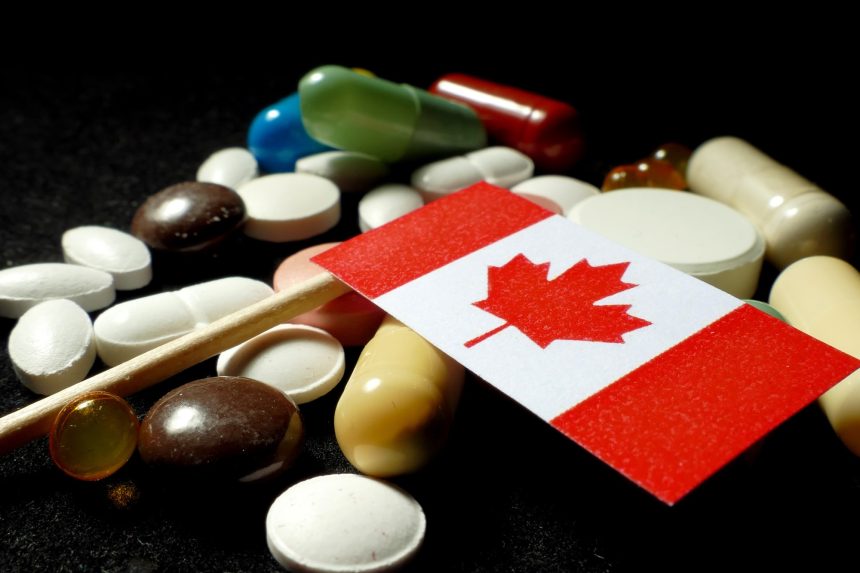Did you know that prescription drug prices are more than 2.5 times higher in the US than in 32 other nations? However, all 33 belong to the Organization for Economic Co-operation and Development (OECD). Canada is one of those 32 countries where prescription drugs cost less than the US.
To be more specific, US drug prices are 218% higher on average than those of the Great White North. So, it’s no wonder that folks in the US would like American pharmacies to be more like Canadian pharmacies.
What exactly drives the cost of US drugs through the roof, though? Why and how does Canada offer the same or similar medicines for much less?
This guide will go over the key differences between the two, so be sure to read on.
No Drug Price Regulatory Body in the US
American drug makers can charge whatever they want for the products they manufacture. That’s because there’s no regulatory body that can stop them from doing so. This is one of the top reasons drugs in the US cost so much more than in Canada.
That lack of regulation enables US drug companies to set prices for their products. American pharmacies and insurers also determine how much patients pay out of pocket. As a result, consumers don’t really have much of a say on the matter.
Those high prices contribute to the low prescription medication adherence in the US. About one in two US patients don’t take their medicines as prescribed. Some do this because they worry about not being able to afford the costs of future refills.
Canada Has Bodies that Regulate Drug Prices
For starters, Canada has the Patented Medicine Prices Review Board (PMPRB). This federal agency is responsible for regulating patented medicine prices sold in Canada. The PMPRB reviews and ensures the prices patented drug makers charge aren’t excessive.
The PMPRB follows several guidelines to determine what “excessive” drug prices are. For example, it can deem a drug price excessive if it costs more than the Consumer Price Index (CPI). It can do the same for a drug that costs more than existing drugs of the same class.
Aside from the PMPRB, there’s also the Pan-Canadian Pharmaceutical Alliance (pCPA). It’s an alliance between Canada’s 10 provinces and three territories. It combines the bargaining power of the 13 to negotiate lower prices on drugs.
In that way, the pCPA helps lower the drug costs for all participating jurisdictions. Since its inception in 2010, it has negotiated lower prices for 95 brand-name drugs. It also limited the price of equivalent brand-name drugs for the 15 most common generic drugs to 18%.
Online Canadian Pharmacies Abide by Drug Pricing Laws
You can go to a physical Canadian pharmacy and pay far less for prescription drugs than what you’d pay in the US. However, you can save even more if you buy from an online Canadian pharmacy. According to Pharmapassport.com, doing so can get you savings of up to 70%.
That’s because all legitimate online Canadian pharmacies abide by Canadian drug-pricing laws. These are pharmacies licensed by the National Association of Pharmacy Regulatory Authorities (NAPRA). NAPRA regulates the field and practice of pharmacy in Canada.
With that said, make sure you check the license of an online Canadian pharmacy you wish to buy from. You should find this information on the website’s About Us or Contact Us page. Take note of the specific province or territory where the online pharmacy operates.
From there, visit that specific jurisdiction’s College of Pharmacy/Pharmacist or board. The provincial or territorial board can confirm the legitimacy of that online pharmacy.
Be sure the pharmacy is a Canadian International Pharmacy Association (CIPA) member, too. CIPA is a Canada-based association of licensed pharmacies in Canada. All CIPA members carry proper licenses and documentation to operate in Canada legally.
Granted, the US has online pharmacies, too. The National Association of Boards of Pharmacy (NABP) is the body that regulates them.
However, all US pharmacies still sell drugs based on the drug maker’s price. As such, you can expect high prices even if you buy prescriptions online from a US-based pharmacy.
US Medicare Doesn’t Have Direct Negotiation Powers
The US Medicare is one of the six major federal government health care programs in the US. As of 2020, more than 61.21 million people in the US relied on Medicare, including adults at least 65 years old. The program also helps younger people with disabilities or end-stage renal disease.
Because Medicare serves millions, it’s the largest single US payer for prescription drugs. The thing is, the federal government hasn’t given it the power to negotiate drug prices. The law only allows Medicare to do so for Medicaid beneficiaries and veterans.
There’s even a specific law that prohibits Medicare from interfering with drug prices. This law is in the 2003 Medicare Prescription Drug, Improvement, and Modernization Act.
Canada has its own Medicare program, which the government publicly funds. It’s not a single national plan, though; each province and territory has its own health care plan. Each program offers some healthcare services for free but doesn’t cover prescription drugs.
However, provinces and territories still offer some level of assistance for prescription drugs. Certain Canadian citizens and permanent residents can get cash aid for medicines. The PMPRB and pCPA also help control drug prices for its Medicare beneficiaries.
Canada Drug Prices for the Win
Thanks to Canada’s laws, Canadian pharmacies charge much lower than their US counterparts. In this way, they help folks in Canada and other parts of the world better adhere to their prescriptions. This is also why Canadians tend to outlive folks in the US.
Hopefully, the US would soon change its drug pricing laws to make medicines easier to afford.
Ready for other interesting tidbits of wisdom on health, lifestyle, and politics? Feel free to browse our recent posts for more guides like this!















